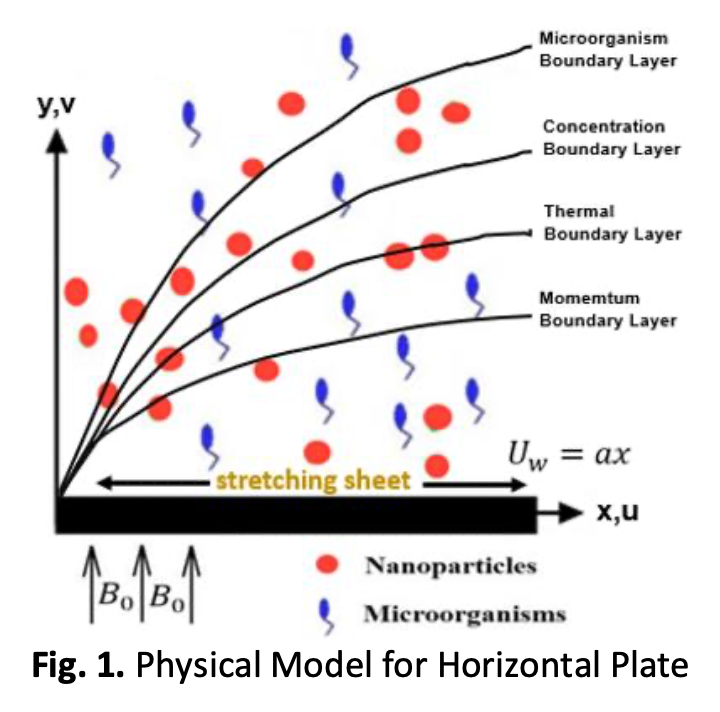Ternary Hybrid Nanofluids Containing Gyrotactic Microorganisms with Magnetohydrodynamics Effect over a Shrinking/Stretching of the Horizontal Plate
DOI:
https://doi.org/10.37934/arfmts.109.2.210230Keywords:
Bioconvection, Gyrotactic microorganisms, Ternary Hybrid Nanofluids, Magnetohydrodynamics, Horizontal plateAbstract
Nowadays, ternary hybrid nanofluids have been discovered by the researchers to play an important role in heat transfer systems. This study focuses on the study of heat and mass transfer of ternary hybrid nanofluids over a shrinking/stretching horizontal plate induced by gyrotactic microorganisms with the effects of magnetohydrodynamics (MHD). Motile microorganisms were added to a suspension of nanoparticles in a base fluid and mixed in most microsystems to the enhance the convectional properties of the nanofluids. This research uses water as the base fluid to investigate the effects of silver (Ag), Aluminium Oxide (AI203) and Copper (Cu) nanoparticles. The similarity transformation was used to reduce the partial differential governing equations into ordinary differential equations. The transformed nonlinear ordinary differential equations with appropriate transformed boundary conditions were solved numerically using the bvp4c procedure in the MATLAB software. The combination of the Tiwari and Das with Buongiorno model used in this mathematical equation. The results of the research are illustrated graphically and presented via tables to show the behaviour of velocity, temperature, concentration of nanoparticles, and microorganism density as well as the coefficients of skin friction, Nusselt number, Sherwood numbers, and motile microorganism density for the nanoparticles of the THNF. The results show that, for the shrinking case, the magnetic field parameter increases for skin friction and Sherwood number, while it decreases for the Nusselt number and density of motile microorganisms. The Brownian motion parameter and bioconvection Péclet number are shown to significantly increase the Sherwood Number and density motile microorganisms. Thermophoresis, however, has been proven to lower the Sherwood number and density of motile microorganisms. Then, THNF (water/Ag-AI2O3-Cu) is shown to better compared to nanofluids (water/AI2O3) and hybrid nanofluids (water/Ag-AI2O3) in both cases.
Downloads
































